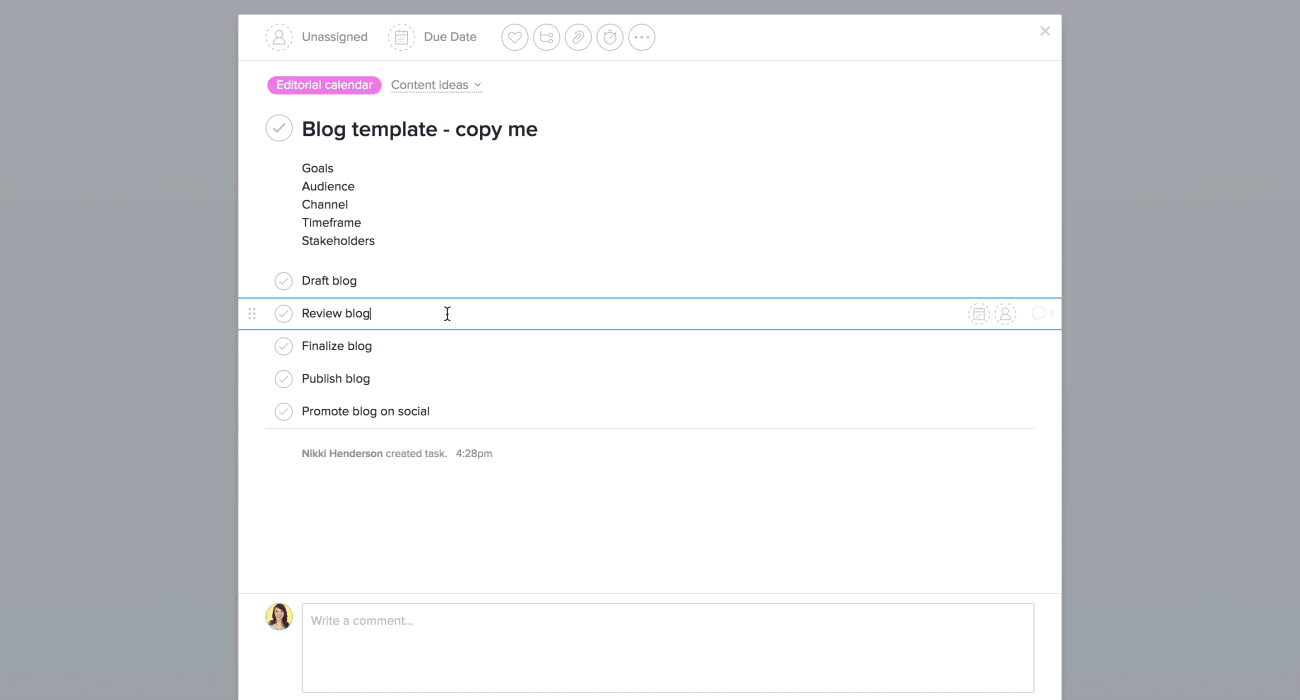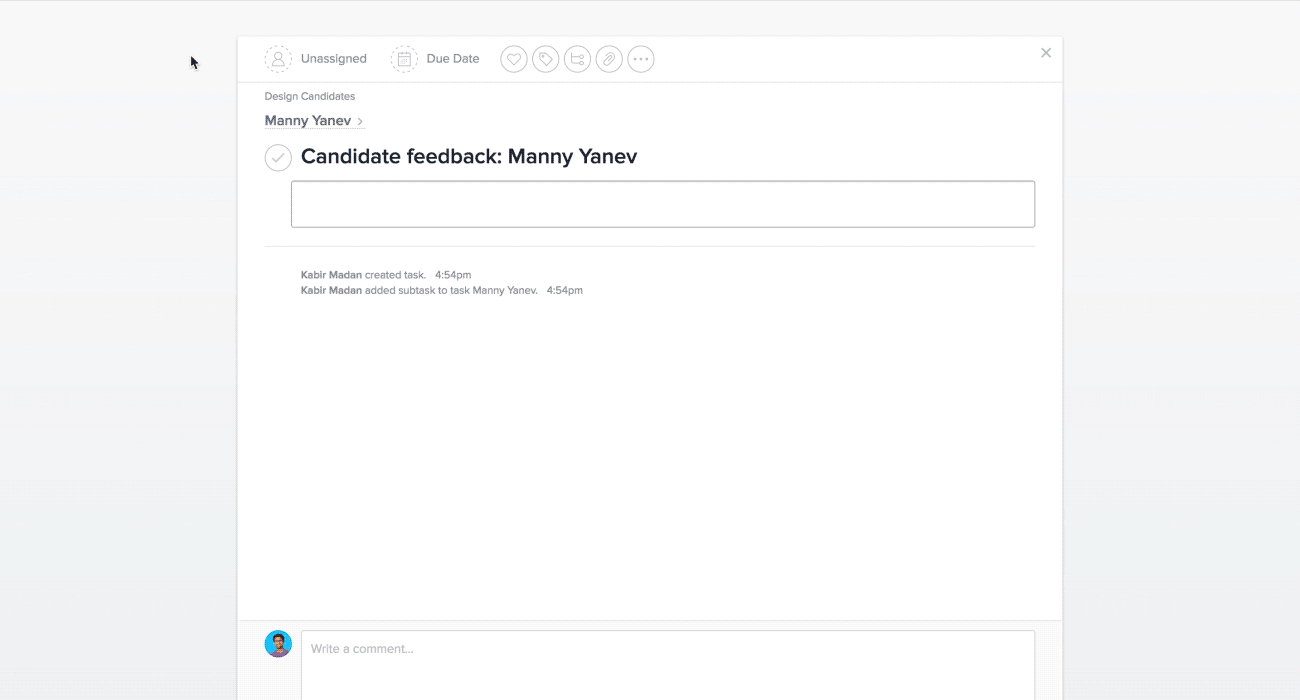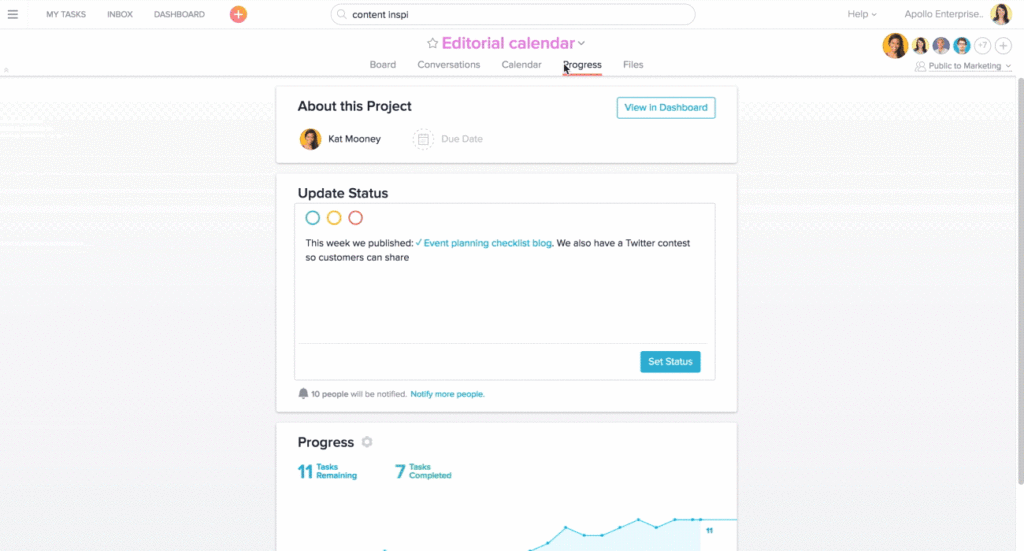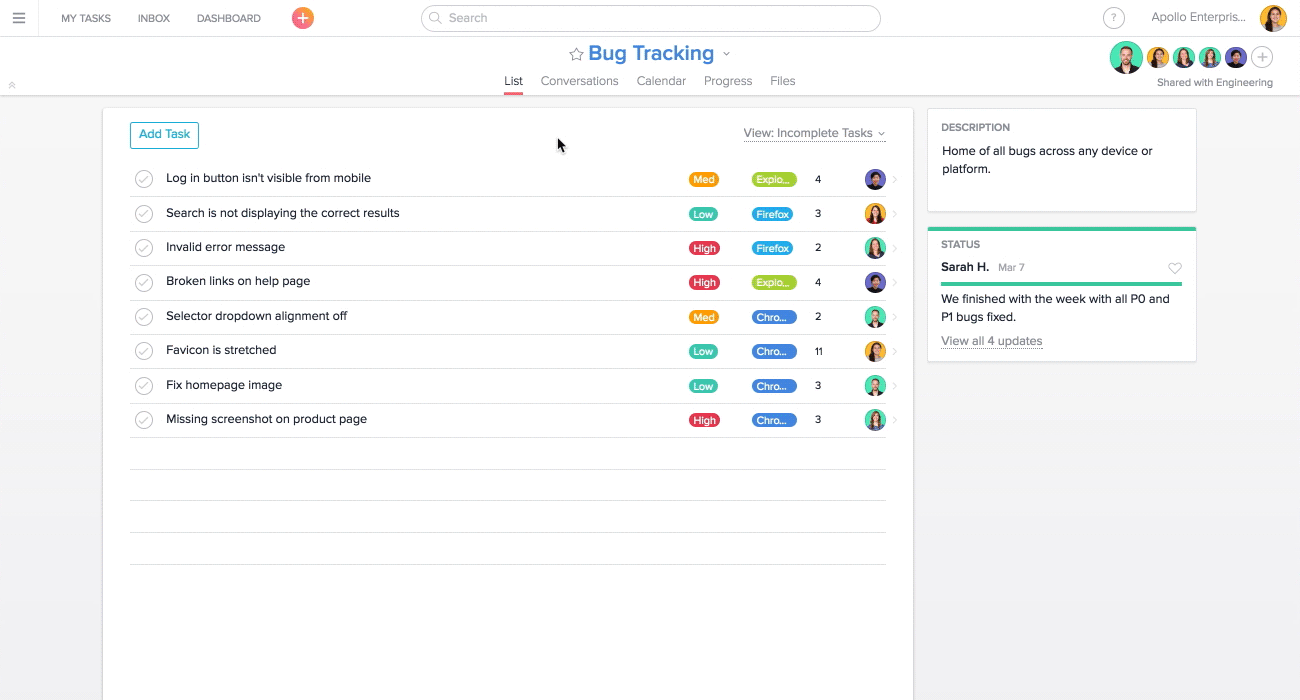5 ways to save time with Asana

Do you ever feel like there aren’t enough hours in the day to complete your long list of to-dos? It can be hard to focus on your top priorities when you’re spending a lot of time following up with teammates and fielding questions about different work. That’s where Asana comes in.
Whether you’re just starting to track your work or you’ve already set up your workflows, these five Asana features will help you keep everyone in the loop and on track—and save time.
1. Add tasks to multiple projects
The work your team is doing is often connected to multiple projects and goals happening across your company. In Asana, you can add a task to multiple projects so everyone can see how work is progressing relative to their specific project. The best part is, all task followers are automatically notified when comments and files are added so you don’t have to worry about updating multiple projects or sending separate emails.
When to use it:
- For product launches, keep tasks that require input from different teams (such as the blog post announcing your new product) in each team’s relevant project so everyone can weigh in—without duplicating work.
- Store your style guide in the projects where you keep internal resources, brand assets, and marketing materials so everyone in your organization is using the same guidelines.
- When you’re planning an event, add your budget tasks to your Finance team’s budget project too so everyone has the same information and the work stays connected.

2. Add task dependencies
When your work is tied to another teammate’s task, it can be hard to know when to get started. Instead of constantly checking in for an update, mark a task as waiting on another task in Asana. Once your teammate completes their work, you’ll be notified that you can get started on yours. Task dependencies can also help managers spot work that is blocked and needs attention.
When to use them:
- During project setup, add dependencies to tasks to help your teammates know how their work affects the rest of the team. Everyone will know when to get started, so you’re more likely to hit your deadlines.
- In your editorial calendar, add a dependency to the “Review blog” task so once “Draft blog” is complete, you know the post is ready to be edited.
- Mark your “Deploy code” task as waiting on “Review new code” so you don’t deploy code that’s not ready.

3. Assign copies of tasks
We believe that the best way to move work forward is to give each task a clear owner, so everyone knows who’s responsible. But sometimes you need multiple teammates to weigh in. Rather than spend time manually creating the same task over and over, you can assign copies of the task to them. You’ll save time and ensure everyone knows what they’re responsible for.
When to use it:
- When brainstorming, it helps to get a variety of thoughts and opinions. Assign copies of a brainstorm task to each stakeholder so they can contribute their unique perspective.
- Before publishing a new webpage, it should get a quick review for typos and bugs. Assign everyone involved a review task so you can collect final updates in one place.
- During the hiring process, assign copies of the feedback task to each teammate who interviewed the candidate. Then take everyone’s feedback into account before making a hiring decision.

4. Share a status update
Status meetings and long email chains are synonymous with project management these days—but they don’t have to be. In Asana, any project member can share a status update with stakeholders (just add them as a follower) so everyone’s on the same page. Plus, you can even link to specific projects and tasks in your update so everyone can easily find the work you’re referencing.
When to use it:
- Instead of scheduling regular meetings to go over company objectives, share a status update about how work is progressing towards your goals.
- When job offers are made to new candidates, recruiters can share the exciting news in a status update in your recruiting project. It’s also a great way to highlight open roles the team is actively working on and ask for referrals.
- Use status updates in your content calendar project to share what’s been recently published and what’s on deck. Besides keeping everyone in the loop, others in your company can follow along and help share the content to their networks.

5. Track anything with custom fields
Task assignees and due dates are great places to start, but you probably need to track other information for tasks too—like priority, stage, channel, or whatever else is important to you. Custom fields let you add extra data to your tasks so you can track anything that matters to your project, team, or organization. With more information in Asana, everyone has clarity around the work they’re doing together and there’s less miscommunication.
When to use them:
- To ensure your design request gets prioritized, add custom fields for priority, how many hours you think it will take, what channel it will be used on, and if it relates to a specific company objective.
- In your bug tracking project, create custom fields for priority, browser type, feature affected, operating system, and number of user reports so it’s easier for the team to prioritize issues.
- Add custom fields to your content calendar project to track article status, type of content, channel, and more.

Now’s the time…
When you’re busy, every minute counts. We hope these features save you time and help keep everyone in the loop, so you can focus on the work that matters. Because as they say, a little change in your workday can go a long way.
We’d love to know: What are your favorite time-saving features in Asana? Tell us in the comments below!
Bonus: For even more time-saving tips, watch this webinar with our Customer Success team.

